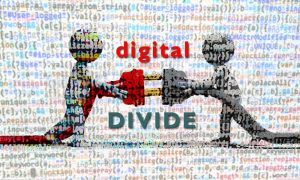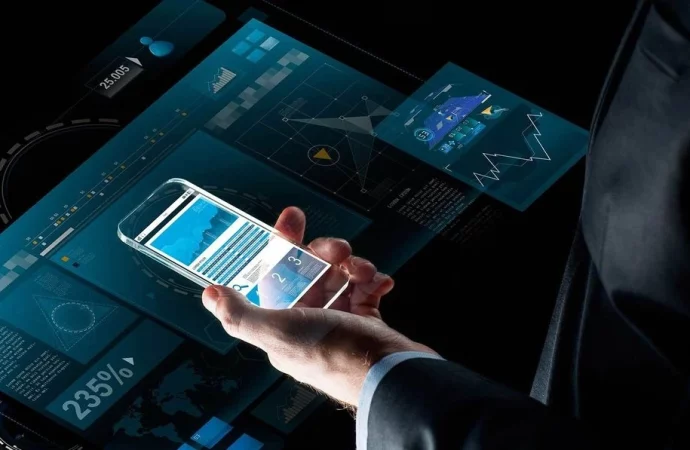The advent of 5G mobile technology is set to transform the telecommunications landscape, ushering in an era characterized by unprecedented connectivity, speed, and reliability. As we stand on the brink of this new technological frontier, it is crucial to explore how 5G is revolutionizing mobile technology, the benefits it brings, and its real-world applications. This
The advent of 5G mobile technology is set to transform the telecommunications landscape, ushering in an era characterized by unprecedented connectivity, speed, and reliability. As we stand on the brink of this new technological frontier, it is crucial to explore how 5G is revolutionizing mobile technology, the benefits it brings, and its real-world applications. This article delves into the latest information surrounding 5G, highlights its advantages, and presents case studies and examples of its transformative impact.
Understanding 5G Mobile Technology
What is 5G?
5G, or fifth-generation wireless technology, is the latest iteration of mobile networks, designed to provide faster speeds, lower latency, and increased capacity compared to its predecessor, 4G. This next-gen technology is built on advanced infrastructure, including high-frequency millimeter waves, small cell networks, and enhanced beamforming techniques.
The deployment of 5G involves a combination of low-band, mid-band, and high-band frequencies. Low-band 5G offers extensive coverage and better penetration through obstacles, while mid-band strikes a balance between speed and coverage. High-band, or millimeter-wave 5G, delivers incredible speed and capacity but is limited in range and penetration.
The Need for 5G

Image by Yandex.com
The increasing demand for mobile data, fueled by the proliferation of smartphones, IoT devices, and streaming services, necessitates a more robust network. As users consume more bandwidth, 4G networks struggle to keep pace, leading to slow connections and dropped calls. 5G addresses these challenges by providing the infrastructure needed for enhanced connectivity and improved user experiences.
Benefits of 5G Mobile Technology
5G technology is not just an incremental upgrade; it represents a paradigm shift in mobile communication. Here are some key benefits:
1. Faster Speeds
One of the most significant advantages of 5G is its speed. 5G networks can deliver download speeds of up to 10 Gbps, compared to 4G’s maximum speed of about 1 Gbps. This increased speed enables quicker downloads, seamless streaming, and more efficient data transfer, transforming how we interact with our devices.
2. Lower Latency
Latency refers to the time it takes for data to travel from one point to another. 5G technology boasts latency as low as 1 millisecond, compared to 30-50 milliseconds for 4G. This rapid response time is crucial for applications requiring real-time communication, such as online gaming, augmented reality (AR), and virtual reality (VR).
3. Increased Capacity
With the ability to support up to one million devices per square kilometer, 5G significantly increases network capacity. This enhancement is essential for accommodating the growing number of IoT devices, from smart home gadgets to connected vehicles.
4. Enhanced Reliability
5G networks are designed to be more reliable, minimizing disruptions and ensuring consistent connectivity. This reliability is particularly important for mission-critical applications in sectors like healthcare, transportation, and public safety.
5. Improved Energy Efficiency
5G technology is engineered to be more energy-efficient than previous generations. By utilizing advanced network management techniques, 5G reduces energy consumption, contributing to more sustainable mobile communication.
6. Support for IoT Devices
5G enables the connection of a vast number of IoT devices, allowing for smarter cities, homes, and industries. The ability to handle many simultaneous connections is crucial for the advancement of smart technology.
7. Enhanced Mobile Broadband Experiences
5G enhances mobile broadband, enabling high-quality video streaming, seamless video calls, and immersive gaming experiences, all without lag or buffering.
Case Studies and Examples of 5G in Action
1. Healthcare Transformation: Remote Surgery
One of the most impactful applications of 5G technology is in the healthcare sector. With the ability to transmit large amounts of data in real-time, 5G facilitates telemedicine and remote patient monitoring. For instance, a hospital in Spain implemented a 5G network to enhance its telemedicine services. Doctors can now perform remote surgeries using robotic systems controlled in real-time, enabling specialists to assist patients in remote locations without needing to travel. In another case, the University of California, Los Angeles (UCLA) used 5G to conduct a remote consultation for a patient undergoing a complex heart procedure, ensuring precise data transmission and improved patient outcomes.
2. Smart Cities Development: Seoul’s Urban Innovations
5G is a critical enabler of smart cities, where interconnected devices improve urban living. In Seoul, South Korea, the city has deployed 5G technology to enhance public services. Smart traffic lights, connected surveillance cameras, and real-time public transport information are just a few examples of how 5G is improving urban infrastructure, reducing congestion, and enhancing safety. Additionally, the city has launched 5G-powered applications that allow citizens to access real-time information on city services, promoting greater civic engagement.
3. Autonomous Vehicles: Enhanced Communication

Image by Yandex.com
The automotive industry is experiencing a revolution with the advent of 5G. The technology supports communication between vehicles and their environment, enabling features such as vehicle-to-vehicle (V2V) and vehicle-to-infrastructure (V2I) communication. For example, companies like Audi and Verizon are collaborating to develop 5G-enabled vehicles capable of sharing real-time data with each other and the surrounding infrastructure. This collaboration aims to reduce traffic accidents, improve navigation, and enhance overall road safety. Additionally, Ford has announced plans to incorporate 5G technology in its vehicles to facilitate V2X (vehicle-to-everything) communication.
4. Enhanced Manufacturing Processes: Siemens and Industry 4.0
5G technology is transforming manufacturing through the implementation of Industry 4.0, which emphasizes automation and data exchange. A notable example is Siemens, which has integrated 5G technology in its factories to enable real-time monitoring of production lines. This integration allows for predictive maintenance, reducing downtime and improving efficiency. For instance, Siemens’ Amberg plant in Germany has leveraged 5G to monitor machinery performance continuously, enabling quick responses to potential issues and optimizing production schedules.
5. Entertainment and Media: Immersive Experiences
The entertainment industry is also leveraging 5G technology to enhance user experiences. Streaming services like Netflix and YouTube can deliver ultra-high-definition content with minimal buffering. In addition, 5G enables immersive experiences in gaming and virtual reality. For instance, Verizon has partnered with the NFL to provide fans with 5G-powered AR experiences during live games, allowing them to view player statistics and other real-time data through their devices. Additionally, companies like Epic Games are developing games that utilize 5G’s capabilities to deliver rich, interactive experiences to players.
6. Agriculture: Precision Farming
5G technology is revolutionizing agriculture through precision farming. By connecting drones, sensors, and machinery, farmers can monitor crop health, soil conditions, and weather patterns in real-time. For example, in Australia, a farm has implemented a 5G network to enhance its operations, using drones equipped with 5G to gather data on crop conditions and apply fertilizers or pesticides only where needed. This technology not only increases yields but also promotes sustainable farming practices by reducing chemical usage.
Challenges and Considerations
While the benefits of 5G are substantial, several challenges must be addressed to fully realize its potential:
1. Infrastructure Costs
The rollout of 5G requires significant investment in infrastructure, including new antennas and small cell installations. This cost may pose challenges for telecom operators, particularly in rural areas where the return on investment may be uncertain. For instance, deploying small cells in urban areas can be costly due to the need for extensive site surveys and coordination with local governments.
2. Spectrum Availability
5G relies on a broader spectrum range than previous generations. The availability of suitable spectrum is essential for successful deployment, and regulatory bodies must work to allocate frequencies efficiently. Countries like the United States have seen intense competition among telecom companies for available spectrum, impacting deployment timelines.
3. Security Concerns
As with any new technology, security risks are a concern. The increase in connected devices and data transmission heightens the potential for cyberattacks. Ensuring robust security measures will be crucial in building trust among consumers and businesses. For example, vulnerabilities in IoT devices connected to 5G networks could lead to data breaches if not properly secured.
4. Digital Divide

Image by Yandex.com
While 5G promises to enhance connectivity, there is a risk that it could exacerbate the digital divide. Ensuring equitable access to 5G technology is essential to prevent further disparities in access to information and services. Efforts must be made to ensure rural and underserved communities benefit from 5G deployment.
Conclusion
5G mobile technology is revolutionizing how we connect, communicate, and interact with the world. With its superior speed, low latency, and increased capacity, 5G is set to transform various industries, from healthcare to entertainment. As we witness the deployment of 5G networks worldwide, it is essential to address the challenges and considerations that accompany this new technology.
As businesses, governments, and communities embrace the potential of 5G, we can look forward to a future characterized by enhanced connectivity, innovation, and opportunities. The revolution of 5G mobile technology is not just about faster speeds; it’s about creating a more connected world where possibilities are limitless. The journey toward widespread 5G adoption may have its challenges, but the potential rewards are vast, paving the way for a smarter, more interconnected future.






















